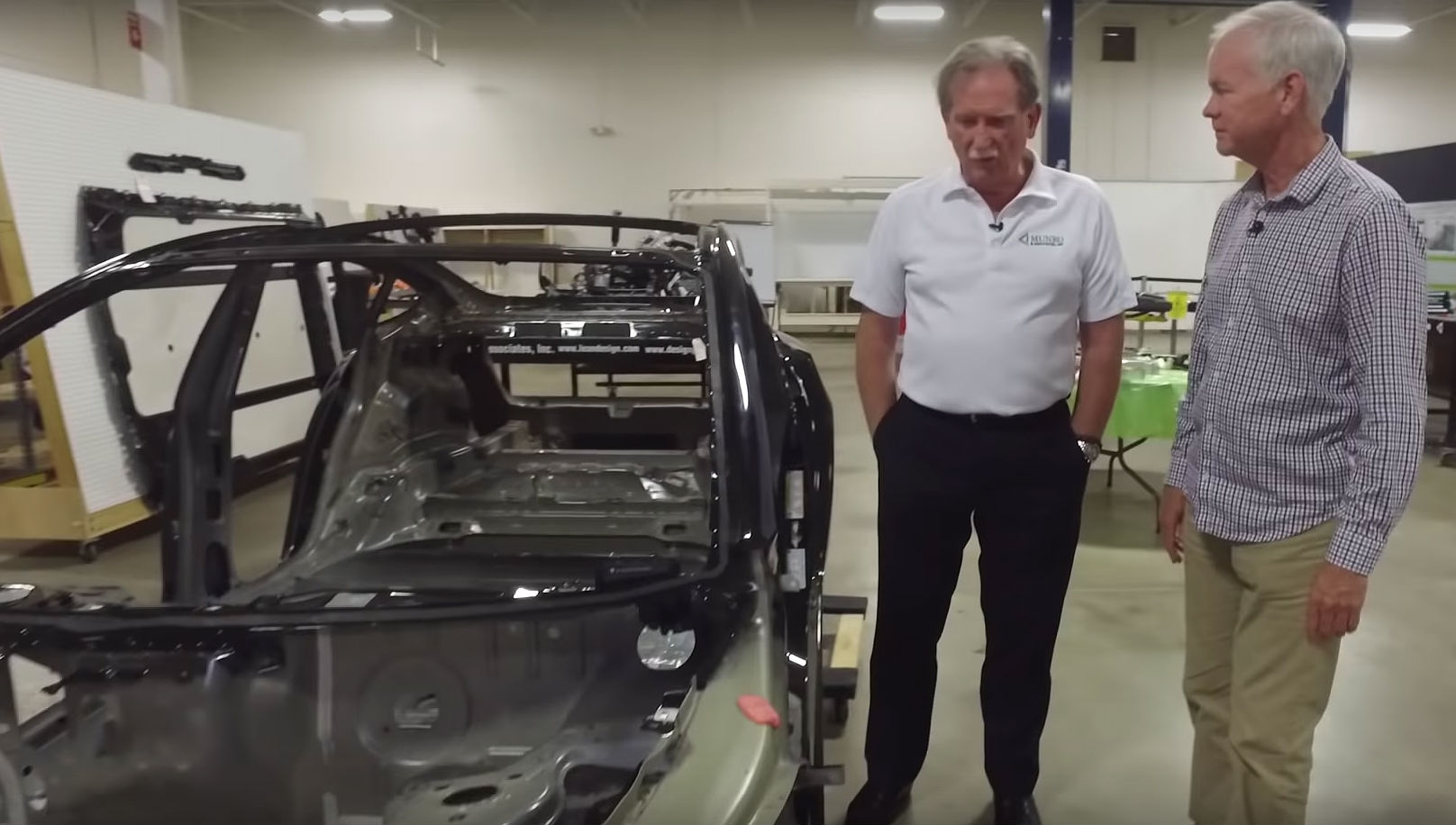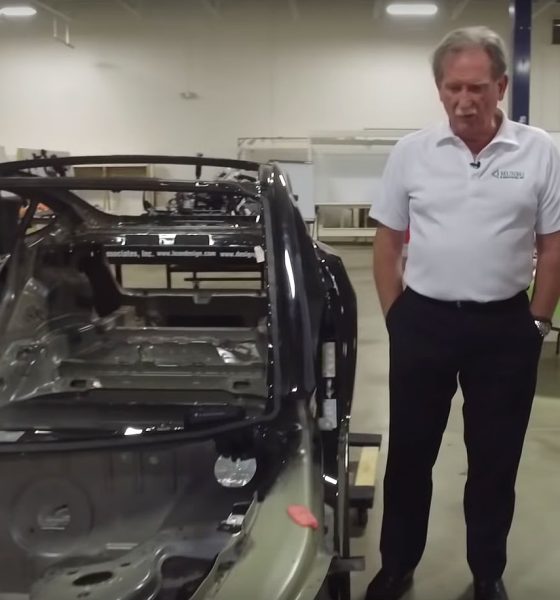

Investor's Corner
Tesla Model 3 exceeds 30% profit, says Sandy Munro after teardown analysis
Teardown specialist Sandy Munro has completed his company’s analysis of the Model 3, and according to the Detroit veteran, Tesla’s compact electric car is solidly profitable. By studying the vehicle’s components, Munro estimates that Tesla would see more than 30% worth of profits from the Long Range RWD version of the vehicle.
Munro’s latest segment was uploaded on the Autoline Network YouTube channel. As noted by John McElroy, the YouTube channel’s host, Munro had a complete change of heart about the compact electric car. The Detroit veteran’s first impressions of the Model 3, after all, were predominantly negative, with Munro noting that the vehicle had build quality issues reminiscent of a 90’s Kia. Munro was so unimpressed with the Model 3’s build that he flat-out stated that the car was a “miserable job.”
In the latest Autoline Network segment, however, Munro admitted that the Model 3 is also set to deliver healthy a healthy profit margin for Tesla.
“The Model 3 is profitable. I didn’t think it was gonna happen this way, but the Model 3 is profitable. Over 30%. No electric car is getting 30% net, nobody,” Munro said.
Munro credits Tesla’s profit margins for the vehicle to the company’s in-house development. In one example, Munro noted that the rearview mirror of the Model 3 costs a mere $29.48, which is far less than the BMW i3’s $93.46 mirror. The Chevy Bolt EV’s rearview mirror was even more expensive at $164.83. According to Munro’s report, the i3 and the Bolt’s rearview mirrors were expensive due to their added functionalities — functionalities that are accomplished by the Model 3’s 15-inch touchscreen.
“That’s the magic of using components that are already on the car. You make them work double or triple duty,” Munro said.
Ultimately, Munro admitted that the final results of his company’s Model 3 analysis were not at all what he expected. Poking fun at his initial reaction, Munro stated “a lot of crow (was) being eaten around here,” citing a colloquial idiom that refers to a person’s admittance of error after taking a strong position.
Munro’s change of heart about the Model 3 started when he found things that he liked about the vehicle in late February. Among the Model 3’s strongest points, according to the auto veteran then, was its ride and drive, since the car handles well on the road. During this time, Munro noted that the Model 3 would fail his company’s build and quality test, but it would likely get decent marks on ride and drive.
Munro returned to talk about the Model 3 last April, where he stated that an analysis of the car’s electronics showed that Tesla is practically utilizing military-grade electronics on the vehicle. Munro also praised the Model 3’s battery pack, stating that it was the best that he had seen so far. Munro’s conclusion then was that everything from the Model 3’s suspension going down was perfect, but everything about the car’s bodywork was questionable.
Tesla eventually issued a statement about Munro’s initial findings, explaining that the Model 3 the teardown company acquired was an early build. During Tesla’s response, the electric car and energy company pledged to make the Model 3 even better over time, and to refine its manufacturing processes to the point were its bodywork becomes well within, or even beyond, industry standards.
Watch Sandy Munro’s conclusions about the Model 3 in the video below.

Investor's Corner
Tesla stock closes at all-time high on heels of Robotaxi progress

Tesla stock (NASDAQ: TSLA) closed at an all-time high on Tuesday, jumping over 3 percent during the day and finishing at $489.88.
The price beats the previous record close, which was $479.86.
Shares have had a crazy year, dipping more than 40 percent from the start of the year. The stock then started to recover once again around late April, when its price started to climb back up from the low $200 level.
This week, Tesla started to climb toward its highest levels ever, as it was revealed on Sunday that the company was testing driverless Robotaxis in Austin. The spike in value pushed the company’s valuation to $1.63 trillion.
Tesla Robotaxi goes driverless as Musk confirms Safety Monitor removal testing
It is the seventh-most valuable company on the market currently, trailing Nvidia, Apple, Alphabet (Google), Microsoft, Amazon, and Meta.
Shares closed up $14.57 today, up over 3 percent.
The stock has gone through a lot this year, as previously mentioned. Shares tumbled in Q1 due to CEO Elon Musk’s involvement with the Department of Government Efficiency (DOGE), which pulled his attention away from his companies and left a major overhang on their valuations.
However, things started to rebound halfway through the year, and as the government started to phase out the $7,500 tax credit, demand spiked as consumers tried to take advantage of it.
Q3 deliveries were the highest in company history, and Tesla responded to the loss of the tax credit with the launch of the Model 3 and Model Y Standard.
Additionally, analysts have announced high expectations this week for the company on Wall Street as Robotaxi continues to be the focus. With autonomy within Tesla’s sights, things are moving in the direction of Robotaxi being a major catalyst for growth on the Street in the coming year.
Elon Musk
Tesla needs to come through on this one Robotaxi metric, analyst says
“We think the key focus from here will be how fast Tesla can scale driverless operations (including if Tesla’s approach to software/hardware allows it to scale significantly faster than competitors, as the company has argued), and on profitability.”

Tesla needs to come through on this one Robotaxi metric, Mark Delaney of Goldman Sachs says.
Tesla is in the process of rolling out its Robotaxi platform to areas outside of Austin and the California Bay Area. It has plans to launch in five additional cities, including Houston, Dallas, Miami, Las Vegas, and Phoenix.
However, the company’s expansion is not what the focus needs to be, according to Delaney. It’s the speed of deployment.
The analyst said:
“We think the key focus from here will be how fast Tesla can scale driverless operations (including if Tesla’s approach to software/hardware allows it to scale significantly faster than competitors, as the company has argued), and on profitability.”
Profitability will come as the Robotaxi fleet expands. Making that money will be dependent on when Tesla can initiate rides in more areas, giving more customers access to the program.
There are some additional things that the company needs to make happen ahead of the major Robotaxi expansion, one of those things is launching driverless rides in Austin, the first city in which it launched the program.
This week, Tesla started testing driverless Robotaxi rides in Austin, as two different Model Y units were spotted with no occupants, a huge step in the company’s plans for the ride-sharing platform.
Tesla Robotaxi goes driverless as Musk confirms Safety Monitor removal testing
CEO Elon Musk has been hoping to remove Safety Monitors from Robotaxis in Austin for several months, first mentioning the plan to have them out by the end of 2025 in September. He confirmed on Sunday that Tesla had officially removed vehicle occupants and started testing truly unsupervised rides.
Although Safety Monitors in Austin have been sitting in the passenger’s seat, they have still had the ability to override things in case of an emergency. After all, the ultimate goal was safety and avoiding any accidents or injuries.
Goldman Sachs reiterated its ‘Neutral’ rating and its $400 price target. Delaney said, “Tesla is making progress with its autonomous technology,” and recent developments make it evident that this is true.
Investor's Corner
Tesla gets bold Robotaxi prediction from Wall Street firm
Last week, Andrew Percoco took over Tesla analysis for Morgan Stanley from Adam Jonas, who covered the stock for years. Percoco seems to be less optimistic and bullish on Tesla shares, while still being fair and balanced in his analysis.

Tesla (NASDAQ: TSLA) received a bold Robotaxi prediction from Morgan Stanley, which anticipates a dramatic increase in the size of the company’s autonomous ride-hailing suite in the coming years.
Last week, Andrew Percoco took over Tesla analysis for Morgan Stanley from Adam Jonas, who covered the stock for years. Percoco seems to be less optimistic and bullish on Tesla shares, while still being fair and balanced in his analysis.
Percoco dug into the Robotaxi fleet and its expansion in the coming years in his latest note, released on Tuesday. The firm expects Tesla to increase the Robotaxi fleet size to 1,000 vehicles in 2026. However, that’s small-scale compared to what they expect from Tesla in a decade.
Tesla expands Robotaxi app access once again, this time on a global scale
By 2035, Morgan Stanley believes there will be one million Robotaxis on the road across multiple cities, a major jump and a considerable fleet size. We assume this means the fleet of vehicles Tesla will operate internally, and not including passenger-owned vehicles that could be added through software updates.
He also listed three specific catalysts that investors should pay attention to, as these will represent the company being on track to achieve its Robotaxi dreams:
- Opening Robotaxi to the public without a Safety Monitor. Timing is unclear, but it appears that Tesla is getting closer by the day.
- Improvement in safety metrics without the Safety Monitor. Tesla’s ability to improve its safety metrics as it scales miles driven without the Safety Monitor is imperative as it looks to scale in new states and cities in 2026.
- Cybercab start of production, targeted for April 2026. Tesla’s Cybercab is a purpose-built vehicle (no steering wheel or pedals, only two seats) that is expected to be produced through its state-of-the-art unboxed manufacturing process, offering further cost reductions and thus accelerating adoption over time.
Robotaxi stands to be one of Tesla’s most significant revenue contributors, especially as the company plans to continue expanding its ride-hailing service across the world in the coming years.
Its current deployment strategy is controlled and conservative to avoid any drastic and potentially program-ruining incidents.
So far, the program, which is active in Austin and the California Bay Area, has been widely successful.








